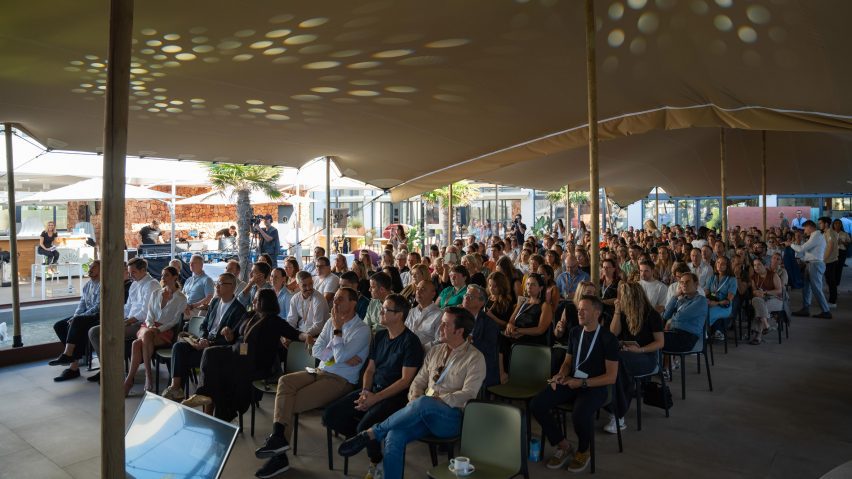
"My early designs were so ugly, so unfunctional and so dangerous" says Tom Dixon
Promotion: designer Tom Dixon took to the stage at C-Next Designers Europe, one of the continent's largest design conferences, to talk about his latest installation that challenges bathroom conventions.
The presentation was made to hundreds of international designers who gathered at the four-day design conference in Almeria, Spain earlier this week.
Hosted by surface manufacturer Cosentino, the event comprised keynotes, panel discussions and immersive activities with figures from the design world such as Formafantasma, interior designer Claudia Afshar, digital artist Andrés Reisinger and Dezeen's editorial director Max Fraser.
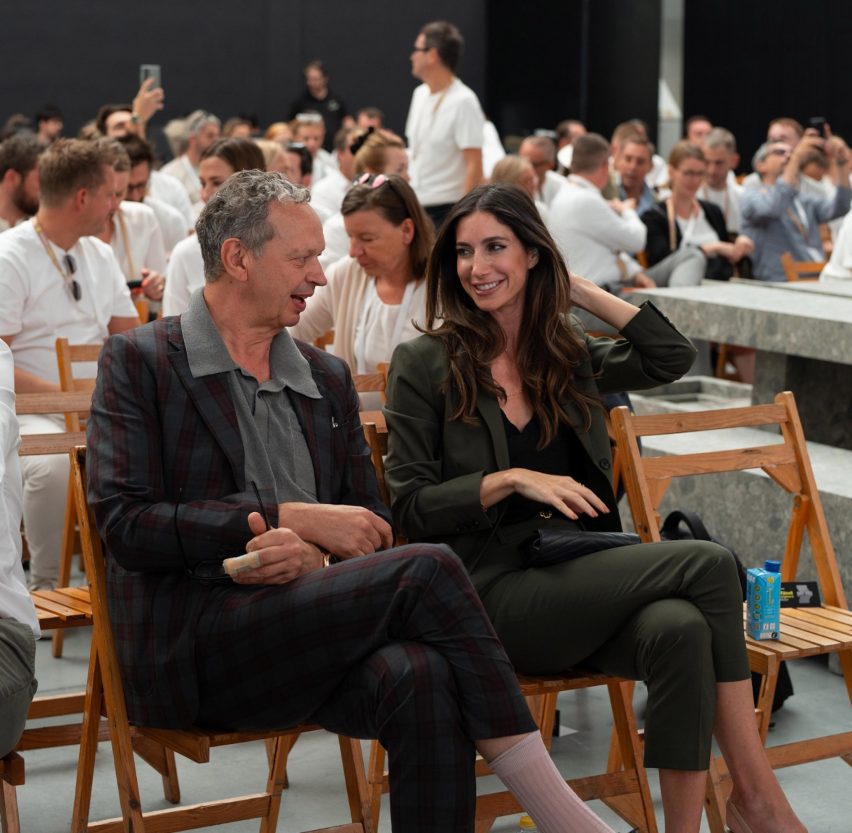
"My early designs were so ugly, so unfunctional and so dangerous actually that it's kind of shocking to look at them, even for me now," said the London-based designer presenting some of his earliest work.
Dixon, who discovered design in the 1980s after a motorcycle accident left him unable to continue his original career as a bass player, started out producing furniture which he made by welding scrap metal.
Self-taught, he said he became a designer through practice and "just by being prolific" until his work was discovered by Italian manufacturer Cappellini. They took one of his original designs, which he describes as a "very British, aggressive object", and turned it into the S chair, which went on to become a commercial and international hit that can now be found in the permanent collections of the Triennale in Milan and MoMa in New York.
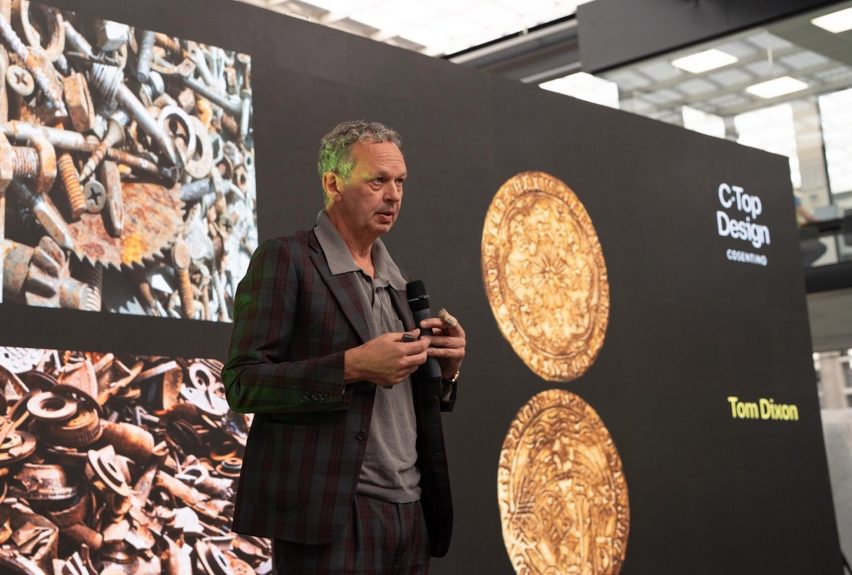
After a ten-year tenure as the creative director of British homeware brand Habitat and "not designing anything", he set up his own business.
"The reason I've done this [set up his own brand], which is actually very different to most designers who have studios and work for brands, is because of the nature of the product design business," he told the audience.
"If you work for one of the big companies such as Herman Miller, you're in competition with some of the best designers that ever existed. You know – George Nelson and the Eameses – but you're also in competition with 40 or 50 other people underneath the brand which is Herman Miller. I wanted to be like a fashion designer and have my own name above the door and really own my own universe."
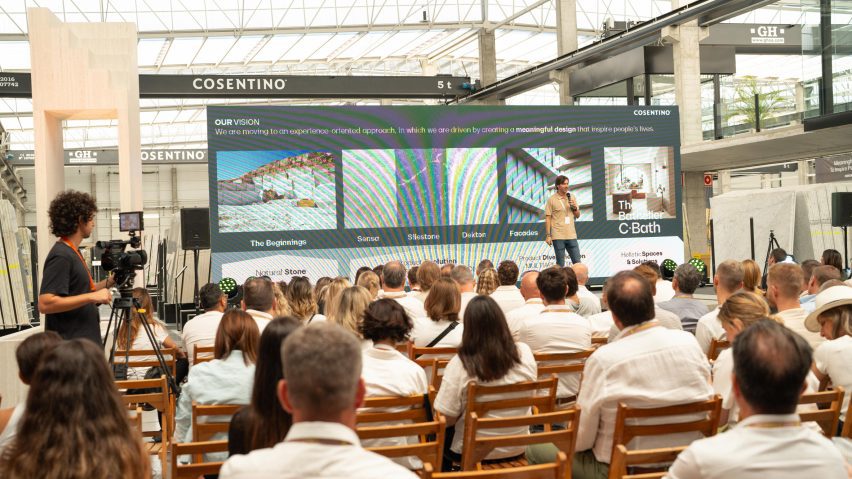
He explained how he developed his own design language characterised by overt mechanisms, solid materials, and industrial production techniques. Structure is often used as decoration resulting in pieces with a distinctive appearance that he says intentionally doesn't look as if it belongs to a specific era or a genre.
Examples include the studio's aluminium Hydro chair, which is blow-formed and laser-cut using processes that were developed in the automotive industry. Similarly, his durable Press Surface lamps are made by dropping massive globs of molten glass at 1,200 degrees centigrade into iron moulds under tons of pressure.
"For me, design isn't just a job, it's alchemy in a way," he said. "It's the transformation of basic material into something valuable. And that's still what excites me about design even today."
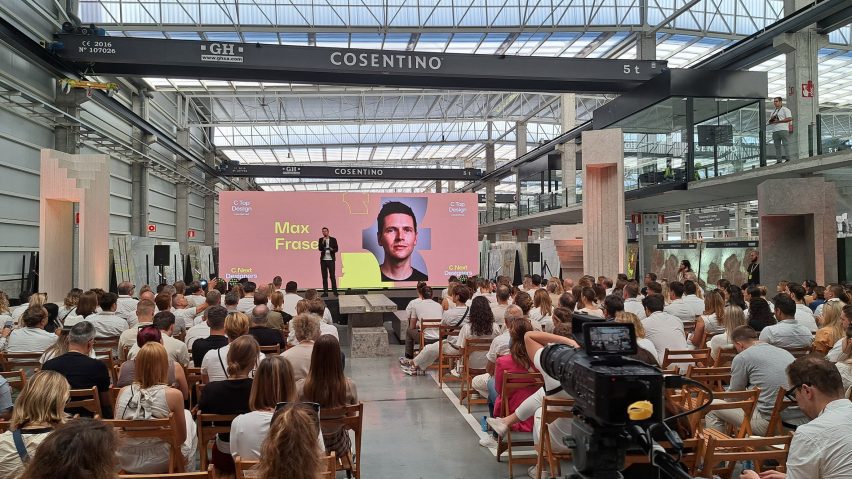
Most recently, he collaborated with Cosentino to create Metamorphic: a sculptural installation at the Fuori Salone of Milano 2023, which challenged the convention of bathroom standards.
Made nearly entirely with Dekton, Cosentino's ultracompact stone-like surface material, the installation features four prefabricated bathroom modules of varying sizes that are open to various interpretations as fixtures or architecture that channels or holds water.
Each monolithic module celebrates the unique properties of Dekton that allow it to be cast seamlessly and into very thin but strong forms.
Referencing the way that kitchens have become social spaces that don't only line the edges of a room but increasingly sit in the centre of it, Dixon said he wanted to experiment with creating social bathroom spaces that recall Roman baths and spas.
"This is almost like turning the bathroom inside out and making it a sculpture within your home," he explained.
C-Next Designers Europe took place between 1 to 4 October 2023. For more information, visit its website.
Partnership content
This article was written by Dezeen for Cosentino as part of a partnership. Find out more about Dezeen partnership content here.